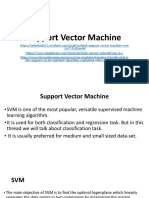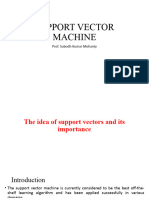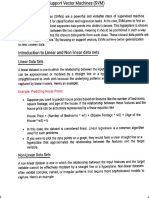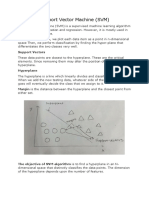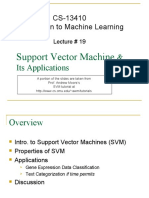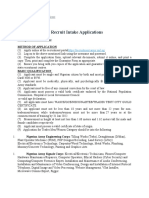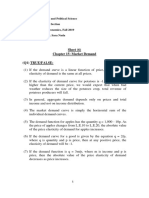0% found this document useful (0 votes)
38 views11 pagesSVM
Support Vector Machine (SVM) is a supervised machine learning algorithm primarily used for classification and regression tasks, focusing on finding the optimal hyperplane to separate data points into different classes while maximizing the margin. It employs techniques like kernels to handle non-linearly separable data and can be classified into linear and non-linear SVM based on the decision boundary. SVM offers advantages such as high-dimensional performance and resilience to outliers, but it also has drawbacks like slow training and sensitivity to noise.
Uploaded by
gangadhar.srigowdaCopyright
© © All Rights Reserved
We take content rights seriously. If you suspect this is your content, claim it here.
Available Formats
Download as PDF, TXT or read online on Scribd
0% found this document useful (0 votes)
38 views11 pagesSVM
Support Vector Machine (SVM) is a supervised machine learning algorithm primarily used for classification and regression tasks, focusing on finding the optimal hyperplane to separate data points into different classes while maximizing the margin. It employs techniques like kernels to handle non-linearly separable data and can be classified into linear and non-linear SVM based on the decision boundary. SVM offers advantages such as high-dimensional performance and resilience to outliers, but it also has drawbacks like slow training and sensitivity to noise.
Uploaded by
gangadhar.srigowdaCopyright
© © All Rights Reserved
We take content rights seriously. If you suspect this is your content, claim it here.
Available Formats
Download as PDF, TXT or read online on Scribd
/ 11



